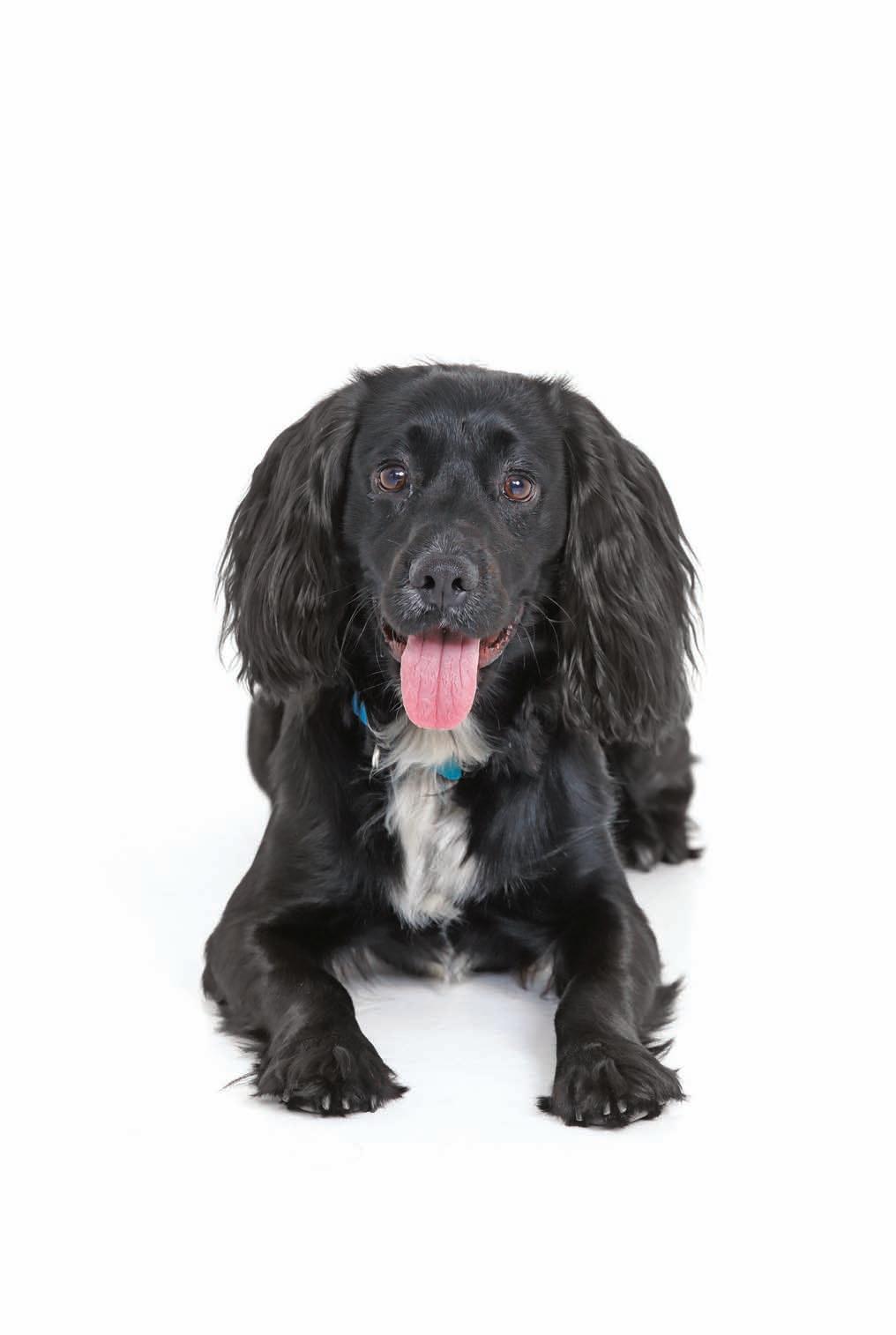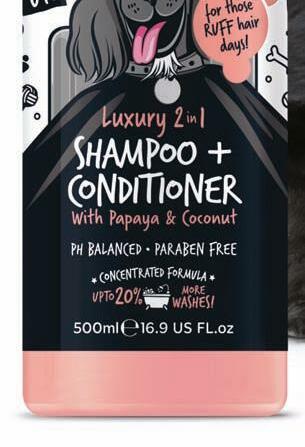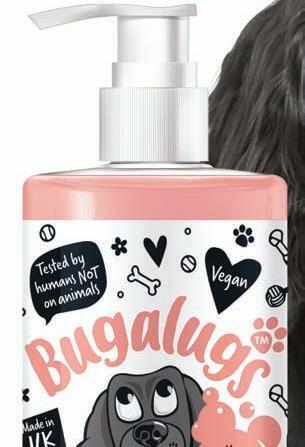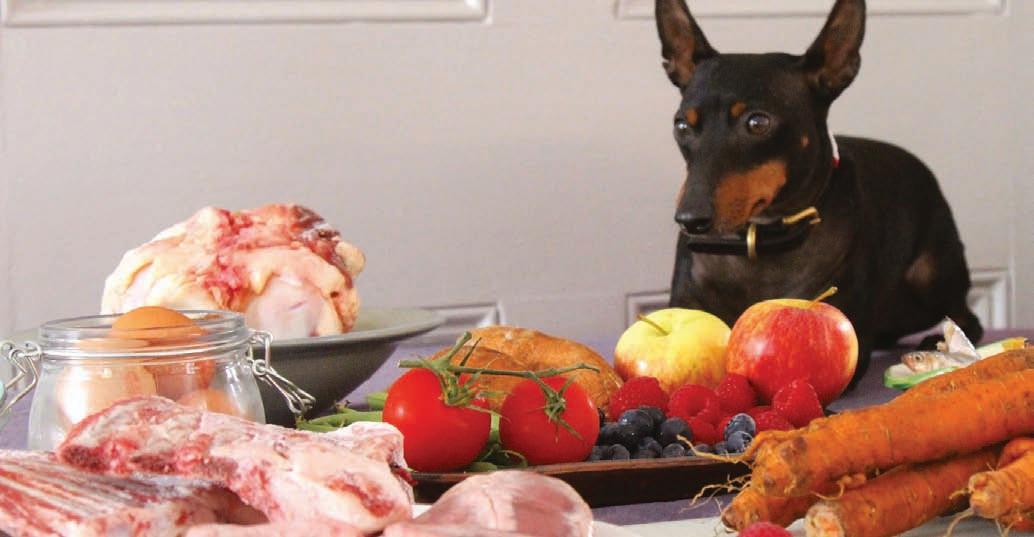
17 minute read
Nutrition advice
Feeding for optimum health
Anna Webb –Podcaster, Nutrition & Behaviour expert studied natural nutrition and therapies with the College of Integrated Veterinary Therapies (CIVT)
It’s a misnomer that feeing a kibble diet helps keep dog’s teeth clean, rather it promotes periodontal disease.
I’ve always been passionate about: ‘You are what you eat’ not just for dogs, but for people too!
We all want the best for our dogs, and it’s not a dress rehearsal! For me feeding for optimum health and behaviour will impact positively on the lives of pet parents, their dogs and even impact on the grooming experience.
Dogs fed a raw unadulterated diet boast a healthy skin and coat that’s a joy to work with, and can be calmer without eating vast quantities of refined sugars and hidden nasties as found in many sterile ultra- processed dog foods.
In my study with the College of Integrated Veterinary Studies, I learnt so much about the fields of nutrigenomics and epigenetics. About how food really can as Hippocrates summed up in 600 BC: “let medicine by thy food, and food be thy medicine’.
I love the field of nutrition as it’s constantly evolving. Just in the past decade or so, scientists have, and continue to reveal the impact of food on our health, at a cellular level: biologically, physiologically, emotionally and behaviourally.
As an expert in nutrition and behaviour, I’ve contributed to a host of TV and radio. I’ve discussed the benefits of feeding an ‘unadulterated’ raw and biologically appropriate diet on Channel 5’s documentary: The Truth About What You Feed Your Dog, on ITV1’s The Titchmarsh Show, not least on BBC Radio London’s hugely popular dog slot, Barking at the Moon, and on my award nominated Podcast A DOG’S LIFE!
Back in 2002 when I brought my first Miniature Bull Terrier, Molly, home feeding a fresh, unprocessed diet achieved ‘cult status’ as a raw food feeder!
There remains much confusion over feeding raw, about it being complicated, inconvenient, even dangerous! Plus, to add to the raw / processed debate there’s confusion as to whether dogs are carnivores or omnivores.
Science concurs that dogs produce a very small amount of the starch digestive enzyme Amylase compared to the amount humans produce.
Make no mistake dogs are biologically and physiologically designed with a carnivorous digestion. From their teeth, their short gut, fast metabolism, and an acidic gut pH, a dog’s digestive system is completely different from an omnivorous one.
Interestingly dog’s tongues cannot move sideways, only up and down, meaning any food deposits that get stuck in-between their teeth can’t be licked away. It’s a misnomer that feeing a kibble diet helps keep dog’s teeth clean, rather it promotes periodontal disease.
So, to classify a dog as an omnivore is not correct, and in my study with the CIVT dogs are classified as primary carnivores. Cats are classified as obligate carnivores, and rabbits as herbivores. Let’s face it no one would ever dream of feeding their bunny on a steak!
The key is to appreciate that all creatures, including humans, should eat a ‘species appropriate’ diet; one that can be efficiently metabolised for maximum nutritional benefit.
For dogs as ‘primary carnivores, this means a meat-based diet receiving a balanced quantity of animal protein and animal fat. Combining a variety of farmed and wild meats from poultry and ruminants to provide a balanced and functional combination of appropriate proteins and the correct proportion of Omegas 3 & 6.
Adding a small 10 per cent proportion of functional carbohydrates. These are not grains or rice, or maize, but cruciferous vegetables like broccoli, or leafy greens like spinach. And health boosting fruits like blueberries, or blackberries. The universal term is polyphenols, fresh fruits and veggies that boost anti-ageing at a cellular level, they work on people too!
Dogs as carnivores cannot get high cholesterol unlike humans. Contrary to popular opinion a low fat, but high sugar diet will make it hard for your dog to shed excess pounds as sugary foods or simple carbohydrates dissolve quickly, creating hunger related issues from a lack of appropriate nutrition.
If you really are what you eat, could we influence our dog’s health and longevity through an appropriate diet? The science backs this up, just in the way we humans are being encouraged to ditch processed foods in favour of fresh whole foods.
The science of Nutrigenomics has exploded over the past decade, and it could explain why dogs are getting porkier, poorlier, and even less trainable.
Being aware of hidden sugars, and the effects of overly processed foods in contrast to fresh, unadulterated foods on your genes can promote, rather than inhibit optimum health and behaviour.
Food fuels our cells, it either nourishes them or depletes them from a healthy gene expression. As we learn more about the interrelationship of foods and our genes, it’s clear that feeding dogs as omnivores on an overly processed, heavy grain -based diet that’s devoid of any moisture promotes inflammatory responses, like atopic skin conditions, hair loss, periodontal disease, arthritis, diabetes, even heart disease.
Just as highly processed ‘simple’ ‘high-glycemic’ refined sugary foods like biscuits create sugar spikes in people, similar hyperactivity and an inability to focus occurs in dogs fed highly processed simple carbohydrate foods like ‘kibble’.
Sugar highs are followed in people and dogs by sugar lows like lethargy, moodiness, and being irritable. But some canine professionals often mistake these behaviours as being illmannered or uncooperative, rather than attributing them to their dog’s food.
Every groomer will have been bitten and had difficulty managing some dogs in their salons, which begs the questions could dogs fed raw be easier to groom?
Apart from a calmer temperament, dogs fed raw will also benefit from a naturally potent source of nutrition that promotes a healthy skin and coat.
Similarly, less likely to suffer from ‘yeast’ infections, itchy skin, hotspots, and tear stains, a raw fed dog will be comfortable in themselves and grooming will reveal health from the inside out.
De-mystifying the issue that feeding raw is a hassle, in 2009 a number of passionate firms transformed ‘raw food feeding’ into frozen ‘ready’ meals that are delivered to your door. You just keep the food deep frozen until you need to thaw and serve – what could be easier?
For me being a raw food feeder for over twenty years, it brings me peace of mind in a bowl. Thanks to a raft of committed companies with a conscience, feeding a raw balanced and complete diet couldn’t be simpler or more ethical.
The Raw Vet Feeding Society is always happy to explain why dogs are a commitment, not a convenience!

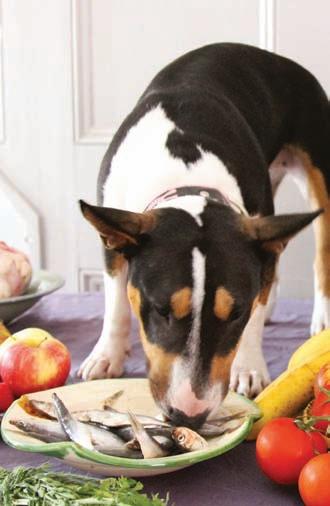
Anna Webb with her dogs
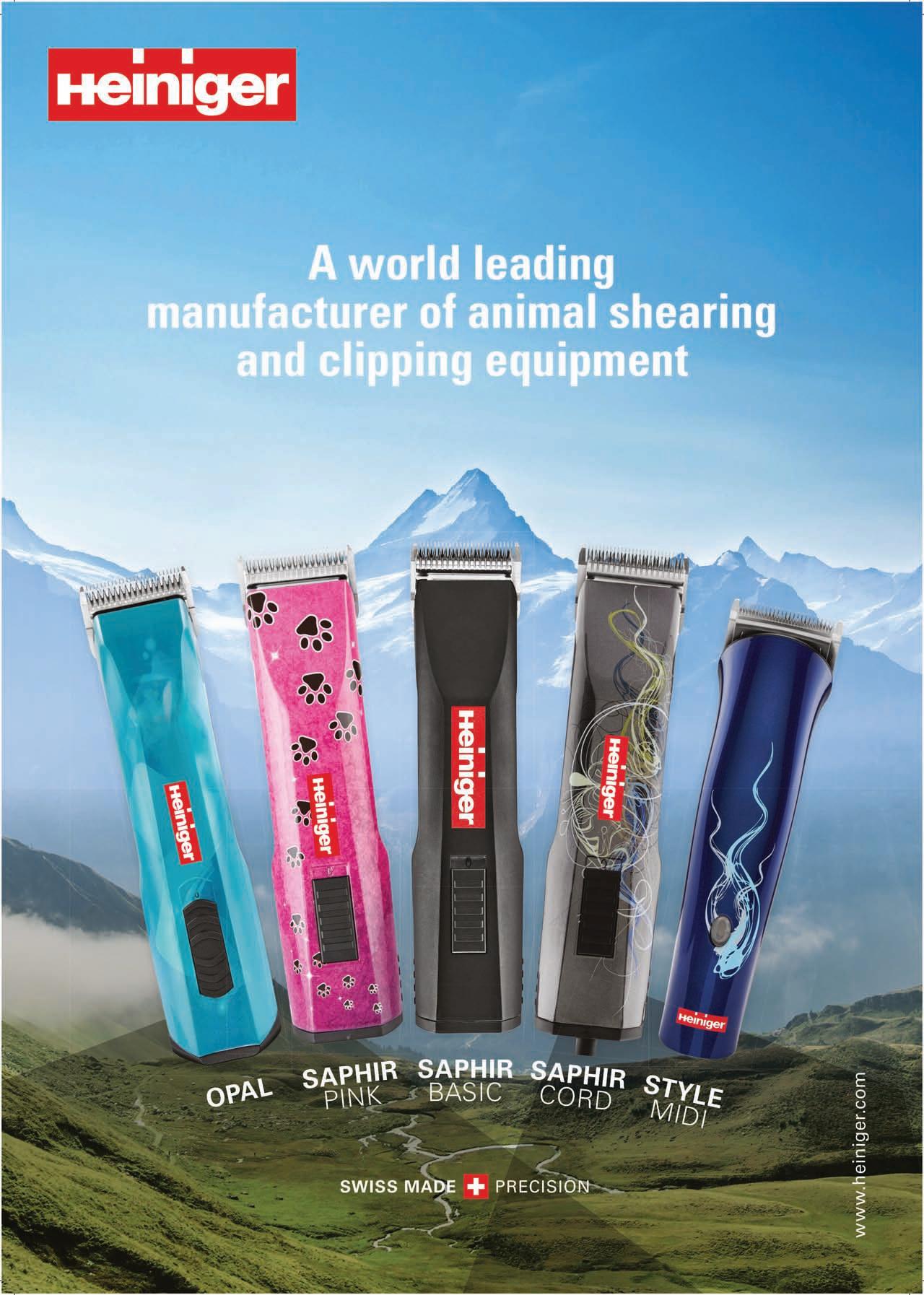
Top 10 Reasons to Feed Raw
Research Shows a Raw Diet Provides Pets with the Most Nutritional Support
When it comes to our own personal nutrition, we are aware of the benefits of avoiding a highly processed diet, so why should this be any different for our pets? The fact is, pets are even more susceptible to the pitfalls of a processed than we are. They are carnivores and incapable of handling such processed carbohydrates.
As pet parents, we are in control of what our furry family members consume, and there is nothing better for your pet than a species specific raw diet, which offers the healthiest and most natural option for your pet.
A raw diet for dogs consists of a balanced mix of muscle meat, bone and organs, mimicking the diet of wild canines. It may also include a healthy selection of fats, vegetables and seasonal berries.
Dogs are facultative carnivores. This means that their primary source of nutrition should stem from meat, but that they can, and do, eat some plant material. These plant fibers help to develop a robust system of protective bacteria which is part of their immune defenses. They could even, in dire circumstances survive on a plant-based diet for a short time – however, long term a plant diet poses a spectrum of health problems as it is devoid of those all essential amino acids that are found so readily in raw meat.
To help better understand the benefits of a raw diet, Bella & Duke’s Chief Consulting Nutritionist, Rowan Sanderson, lists his top 10 reasons to to start your pet on a raw vs cooked diet now:
1. Helps maintain a healthy weight
Obesity is the number one health issue facing our pet population today. A raw diet has the correct balance of “Macronutrients”, higher protein, moderate fats and low carbohydrates which translates to your dog naturally storing much less body fat.
2. Aids digestion
Dogs are natural carnivores and as such their digestive enzymes are geared for raw meat! Research has shown that a raw meaty diet is not only easier for canines to digest but it is also better absorbed meaning those all essential nutrients get used as nature intended.
3. Improves toilet habits
This is one of the first things owners comment on when they begin feeding raw to their pet. In the absence of those fillers found in processed food, the “end product”, your pet’s stool, is smaller, firmer, easier to pass and even helps express their anal glands on exit. Less fermented grains also means significantly less aroma and it’s easier to dispose of which makes for a happier pet guardian.
4. Supports Oral Health
A diet that is lower in carbohydrates, is naturally low in the sugars that unhealthy mouth bacteria thrive on. Dogs can get gum disease too and this has a downstream health impact on their pancreas, heart and brain too. In fact a healthier oral microbiome is associated with lower inflammation in your pet full stop.
5. Glossier skin and coat
A raw diet is high in the healthy unoxidised fatty acids, omega 3 and 6 as well as the key amino acids for hair production. This means their fur is kept oh so soft and shiny, without excess shedding.
Bella & Duke’s customers have also reported that their dog smells clean and healthy without that ‘dirty dog’ smell.
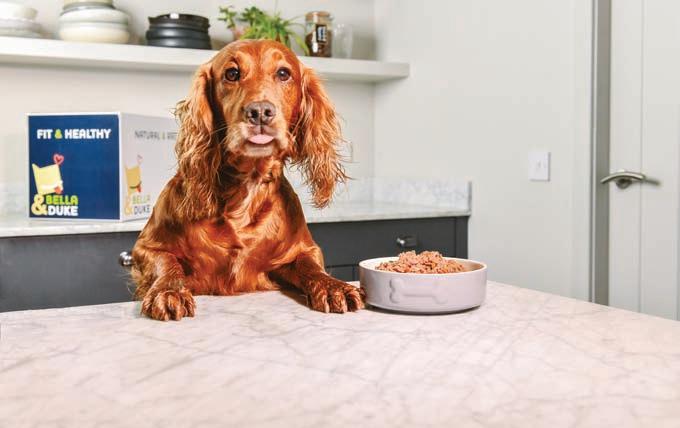

6. Supports healthy bones and joints
Raw bone is a key component of the raw diet and is a rich source of calcium and phosphorus in the exact ratios required for bone health, repair and growth. Raw food also contains connective tissues, which is an excellent source of chondroitin and glucosamine as well as collagen to support your dog’s joints and keep them healthy.
Just as important with a raw food diet, are the foods which are excluded such as grains or grain substitutes. Emerging research correlates much higher joint inflammation with grain consumption.
7. Supports the immune system
Raw meat provides high-quality protein aminos and key bone fibers which support a healthy gut lining. The gut is both the headquarters of your dog’s immune system, sending important health signals around its body, and the gatekeeper for toxins, keeping them at bay and supporting overall immune health.
A measured amount of vegetables and berries provides an array of immune-supporting vitamins as well as antioxidants and phytonutrients which help your dog to stay healthy and keep their immune system strong.
8. Balanced Behaviour
Eating food that satisfies their biological needs not only supports your dog’s physical health, it supports their mental wellbeing too. A healthier gut helps make all important neurotransmitters to keep your dogs happy as well as healthy.
9. Balanced energy levels
A raw diet provides both healthy protein and fats in the ratios they thrive on , meaning that your dog will have plenty of consistent energy to join you on walks, explore and interact with the world around them. Goodbye processed food sugar slumps and snoring on the sofa!
10. Supports cognition and emotional health
Bella & Duke premium beef raw dog food meal ingredients
We now know that good gut health plays an important role in mood, memory and focus. We also know that pets fed a varied raw diet have a more developed gut microbiome, particularly with some key longevity species.
This contributes to your dog’s mental wellbeing and also supports memory and learning. The healthy fats in raw food help to protect and support your pet’s brain which may reduce cognitive decline as they age.
Mark Scott, CEO of Bella and Duke, said: “We are constantly finding new ways of improving our own diet. We’re well aware of the dangers of having processed foods in our diet, so it doesn’t make sense to feed this to our pets. Switching to a healthier, natural raw diet has proven to provide a range of health and happiness benefits for your pet.
“Our pets have always been right by us, so it’s time we do right by them and our mission at Bella & Duke is to help pets live a happier life.”
After losing their dogs to cancer, Mark and Tony co-founded Bella & Duke upon researching the negative impacts of processed foods on our pets. They launched Bella & Duke with an aim to educate other cat and dog owners on the nutritional outcomes of their pets’ diets and to challenge the pet industry on the nutritional standards in conventional processed foods.
From puppies and kittens to senior dogs and cats there are subscriptions to fit your pet’s needs at every stage of its life. Benefits of a raw diet can include improved digestion, boosted immune systems, increased energy levels and a glossier coat.
The veterinarian approved pet food subscription consists of nutritionally balanced and easy to use meals which are comprised of raw meats minced and mixed with purposeful seasonal fruits and vegetables. There is also an option for pets whose health benefits from an exclusion diet, through a single protein range which also excludes fruit and vegetables. Extras such as treats, bone broth and pet health and wellness products can be added onto your subscription as and when you need them. Each delivery comes frozen to ensure all nutrients are locked in to enrich your pet’s diet.
According to their Pet health & happiness survey 2021, 77% of Bella & Duke customers reported an improvement in the health and shine of their pets coat within eight weeks, 75% agreed it aided their pets digestion and 58% reported improvements in their pet’s weight after moving them to a raw food diet.
You can find out more about the nutritional benefits and Bella & Dukes product offering at: www.bellaandduke.com
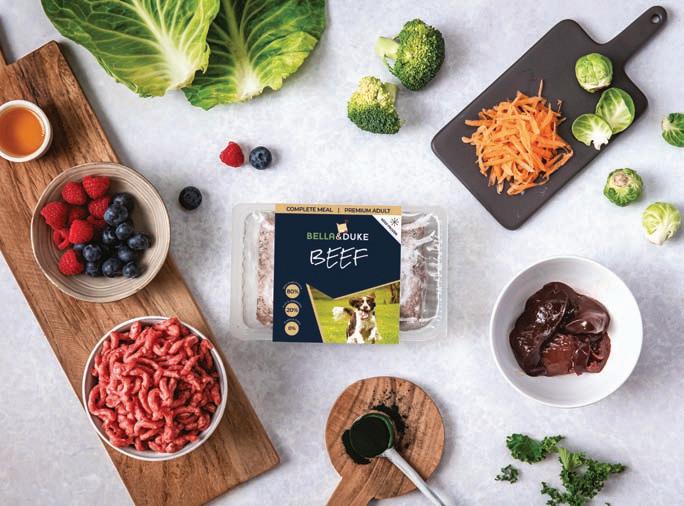
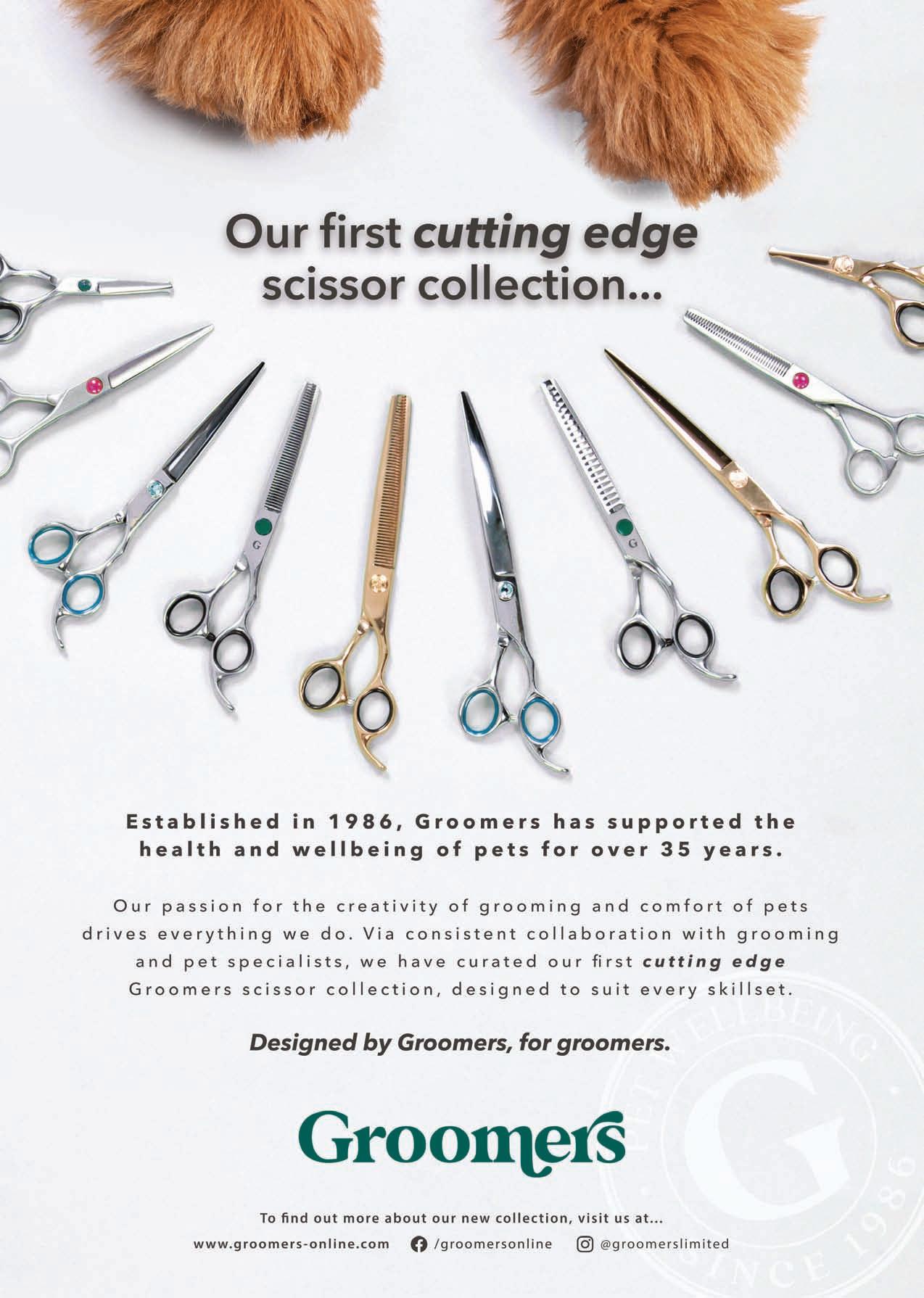
Good Dental Hygiene is Vital
Like us, pets can suffer the effects of poor oral hygiene. The good news is that an effective oral health regime will extend the life of a pet and there’s a raft of products designed to help owners and groomers achieve this:
The adverse effects of periodontal disease are due in part to the toxins the bacteria secrete and the damage these toxins cause to delicate kidney, cardiac, and brain tissue. In addition, many veterinarians believe that actual bacterial colonies can spread via the circulation and set up housekeeping within the animal’s tissues, commonly in the heart valve areas, kidneys and liver. Far better than extracting teeth, performing gingival flaps, filling erosions or doing root canal procedures, would be to prevent the health damaging periodontal disease in the first place.
Since most dogs presented with advanced periodontitis are older canines, owner concern regarding the safety of dental procedures always seems to be an impediment to performing dental procedures, especially since anaesthesia is an important aspect of a thorough dental cleaning. But it is important to consider the benefits of the treatment offset against what is generally a low risk of using anaesthetic on an older dog.
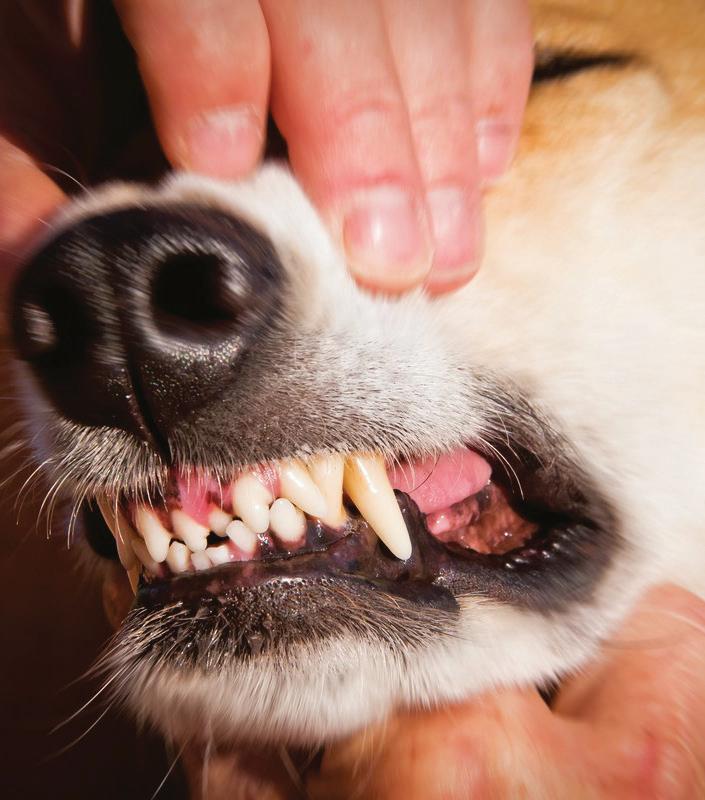
Preventing the onset of health damaging periodontal disease is the best scenario.
Prevention
One of the best ways to insure optimum oral health is to provide the dog with a well-balanced, meat-based dog food. Meat assists in keeping the mouth environment healthy. Actively encouraging the dog to utilize chew treats that require some “exercising” of the teeth, such as is provided by
compressed rawhide chewies, hard rubber or nylon chew toys, can assist in keeping the mouth structures vital. Brushing the dog’s teeth can be a big help, too, but needs to be done almost daily.
One study in the Journal of Veterinary Dentistry, December, 1996, reported “Tooth-brushing every other day did not maintain clinically healthy gingiva in dogs. The daily addition of a dental hygiene chew to a regimen of tooth brushing every other day reduced the gingivitis scores and reduced the accumulation of dental deposits (plaque, calculus and stain). Daily tooth-brushing should be the recommendation to the dog owner irrespective of dietary regimen.”
Newer dental care products that include antiseptic impregnated chewies, canine appropriate tooth brushes, and even flavoured tooth pastes to “reward” the dog for allowing the brushing, are available online and in pet supply stores or veterinary surgeries. Also important are routine oral hygiene visits where under light anesthesia the patient can undergo ultrasonic teeth cleaning, close inspection of teeth and gingiva, and assessment of overall oral health.
Addressing problems when they are minor and preventing the health damaging effects of bacterial contamination and systemic toxin release are immeasurably beneficial to the dog’s long-term health status.
Dr Jan Bellows DVM, neatly sums up the need for optimum oral health throughout a dog’s life, “When a client asks me how long their puppy will live, I usually respond 15-17 years if you brush their teeth daily … 11-13 years if you don’t.”
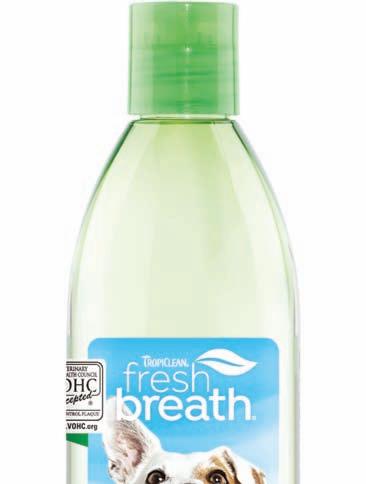
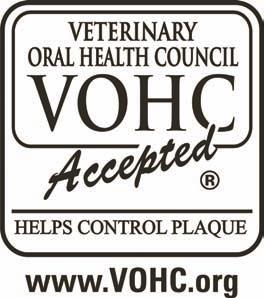
Stress-free Solutions are at Hand Tropiclean Fresh Breath
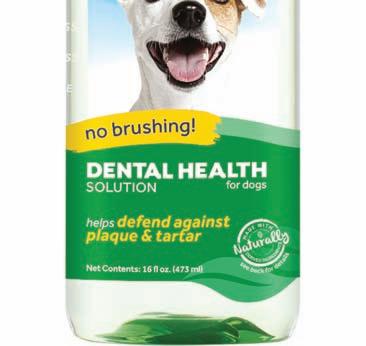

Is brushing a dog’s teeth stressful to you and the dog?
Gum disease is a bigger problem in dogs than in humans as dogs have more alkaline in their mouth and they don’t get their teeth brushed every day.
If gum disease takes hold it can be painful and lead to more serious problems. Signs to look out for: Difficulty picking up food Bleeding or red gums Loose teeth Blood in saliva Strange noises when eating Pawing at mouth Dribbling And of course, bad breath.
If gum disease is left untreated the dog may need veterinary intervention which would require putting the dog to sleep and as most pet insurance doesn’t cover dental treatment you can be presented with very hefty vet bill.
Fresh Breath by TropiClean is a range of ‘no brush formula’ products, all of which are incredibly easy to apply and more importantly are brushless!
TropiClean dental items work naturally, not enzymatically where active natural ingredients help break down plaque and tartar and promote fresh breath.
The Dental Health Solution now carries the VOHC (Veterinary Oral Health Council) Seal of Acceptance for Plaque control and the NASC (National Animal Supplement Council Quality Seal.
These are added to your dog or cat water and with their unique combination of ingredients provide up to 12 hours of fresh breath and defend against the new formation of plaque and tartar. Available in a range of solution helping with hip, joint and digestive ailments.
The Fresh Breath Oral Gels come in a range of flavours with a unique combination of ingredients to help remove plaque and tartar.
The dental wipes like the above are a safe way to remove the plaque and tartar.
Cat and Puppy versions available in most products.
Start your dental routine with your puppy so that it becomes a normal part of their everyday life. Products have a three year shelf life so are ideal for groomers to stock.
